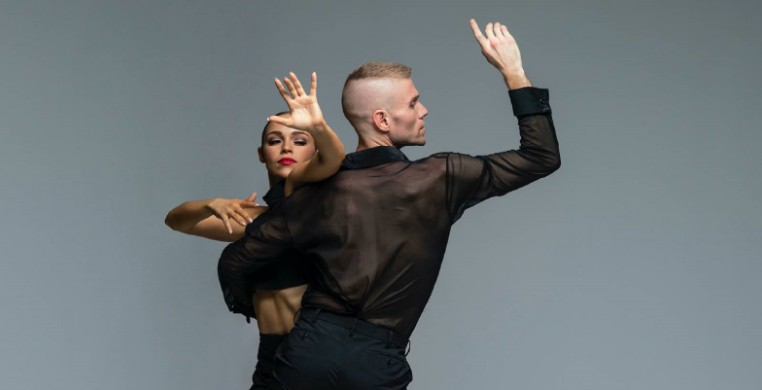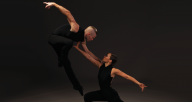“Fill me in on your new dancers,” I asked executive director of Giordano Dance Chicago Michael McStraw in a recent phone interview. Little did I know my innocent query would be met by a heartwarming story of peril, determination, survival, and, ultimately transformation during the COVID Pandemic.
“GDC almost didn’t make it through the Pandemic. The loss of revenue was catastrophic,” McStraw said. Thanks to a federal emergency grant they were able to re-hire and bring back all the dancers.
“We didn’t sit and wait,” McStraw said. “We engaged a full board to adapt and energize a strategic plan.” That plan addressed issues such as compensation, communication, diversity, and storytelling about jazz dance.
One of the things that resulted from the strategic planning was the decision to conduct virtual auditions, which meant drawing from a much broader talent pool than they had previously had with in-person only, which drew primarily from a local talent pool. The result has been “the most diverse and most talented group ever,” McStraw said.
The initial call in April of 2021 drew 104 applicants who sent in films. Of those, 40 were invited to audition via live zoom. “Some were in their living rooms, some in a racket ball court or dance studio. There were technical challenges,” McStraw explained. When GDC received applications, they didn’t look initially at resumés or headshots, but chose instead to look at the filmed work samples first, giving as much liberty as necessary for differences in technical production factors. Switching to virtual auditions, “we gave up things we had held so dear.” As it turned out, the pivot proved a blessing in disguise. “This will be our new way!”
Ten years ago, I sat on the floor of a studio in the Fine Arts Building surrounded by a semi-circle of sixteen sweaty GDC dancers. They had just finished a run-through of their 50th anniversary program. As I interviewed them, their comments reflected a sense of reverence for the art form and commitment to one another that embodied the Giordano ethos of founding director Gus Giordano.
Sixty years ago, Jazz Dance was largely relegated to the status of poor cousin of what were considered the legitimate concert dance genres of ballet and modern dance. Gus’s aim was to change that, and he set it in motion with a codification of his unique jazz dance technique, innovative use of music, and choreography that encompassed narrative and abstract treatment of wide-ranging themes, all through the lens of the jazz dance idiom. He also insisted on incorporating classical ballet into the training of his dancers.
Upon Gus’s official retirement in 1993, his daughter, Nan Giordano, became artistic director and has continued to develop Gus’s dream into a company of international standing with innovative jazz dance choreography.
The program will be presented this weekend at the McAninch Arts Center at College of DuPage and next weekend at The Harris Theatre for Music and Dance in Chicago.
Opening the first half of the program is the iconic Giordano Moves (2005—reconstructed 2022), a guided tour through Gus Giordano’s choreography, originally staged by Nan Giordano and Jon Lehrer. Nan and associate artistic director Cesar G. Solinas have restaged the piece for these concerts, with a new jazz score composed by George McRae.
Former company dancer Autumn Eckman’s common thread (2009), set to an original score by Dan Myers and John Ovnik, is a lyric piece for the GDC senior company of three women and two men.
Closing the first half of the program is Tony Powell’s Impulse (2006). “Dangerous” is the word to describe this high-octane piece for ten dancers, with people flying through the air and getting caught on a hair’s breath.
Following Intermission, Peter Chu’s Groove, formed in (2019) opens Act Two with a nod to the rhythmic underpinning of jazz dance, set to live music by Jake Kelberman.
Cesar Solinas’s premiere preview performance of lub-dub, set to music by Travis Lake and Medwyn Goodall, explores the normal rhythms of the human heart.
Closing the program is Ray Leeper’s SOUL (2018). Set to music by Gladys Knight and the Pips, Al Green, and Tina Turner, it was created in honor of Candace Jordan and is performed by the full company.
McStraw expressed gratitude for the board’s efforts and said he wants the world to know, “because of them, we are stronger than ever!”
For tickets and further information, please go to SeeChicagoDance.com and click on “See Dance.”



